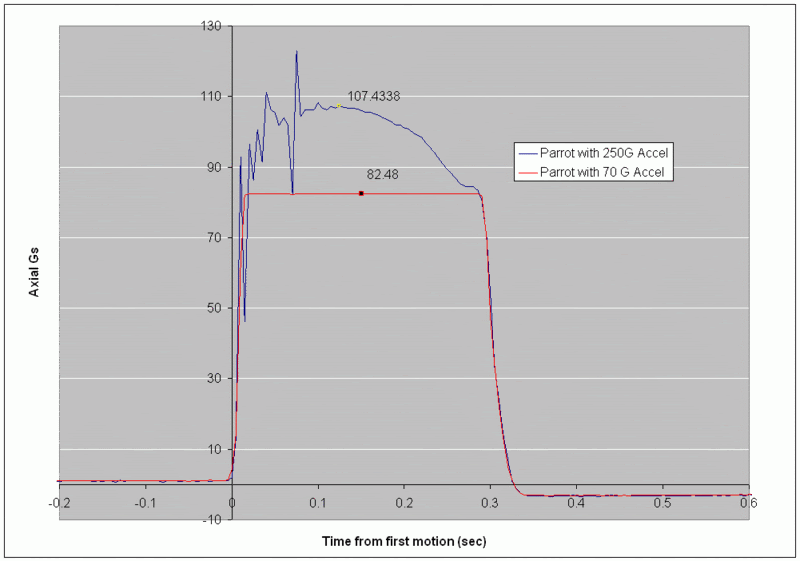Cross-posted.
Today I flew my new 38mm av-bay that has 2 different Parrot altimeters: one with a 70G accelerometer, and one with a 250G accelerometer. They flew in a shortened Thunderbolt 38 that I redecorated and re-christened as der Mad Rex. I put an H999 in there, and the results were pretty spectacular. It left the rail at 150mph, and hit 500 mph in about 0.2 seconds. Best of all, it gave me a great flight to see what the 70G accel does under high Gs:

This 70G accelerometer cut off the output at about 82 Gs. I'm happy to see that the data doesn't do anything too funky when it exceeds the rated output range of 70 Gs. So if a small part of the thrust curve exceeds 70 or even 82 Gs, nothing too bad will happen; the only bad result is that part of the impulse that exceeds 82 Gs won't be taken into account in downstream calculations.
Today I flew my new 38mm av-bay that has 2 different Parrot altimeters: one with a 70G accelerometer, and one with a 250G accelerometer. They flew in a shortened Thunderbolt 38 that I redecorated and re-christened as der Mad Rex. I put an H999 in there, and the results were pretty spectacular. It left the rail at 150mph, and hit 500 mph in about 0.2 seconds. Best of all, it gave me a great flight to see what the 70G accel does under high Gs:

This 70G accelerometer cut off the output at about 82 Gs. I'm happy to see that the data doesn't do anything too funky when it exceeds the rated output range of 70 Gs. So if a small part of the thrust curve exceeds 70 or even 82 Gs, nothing too bad will happen; the only bad result is that part of the impulse that exceeds 82 Gs won't be taken into account in downstream calculations.


